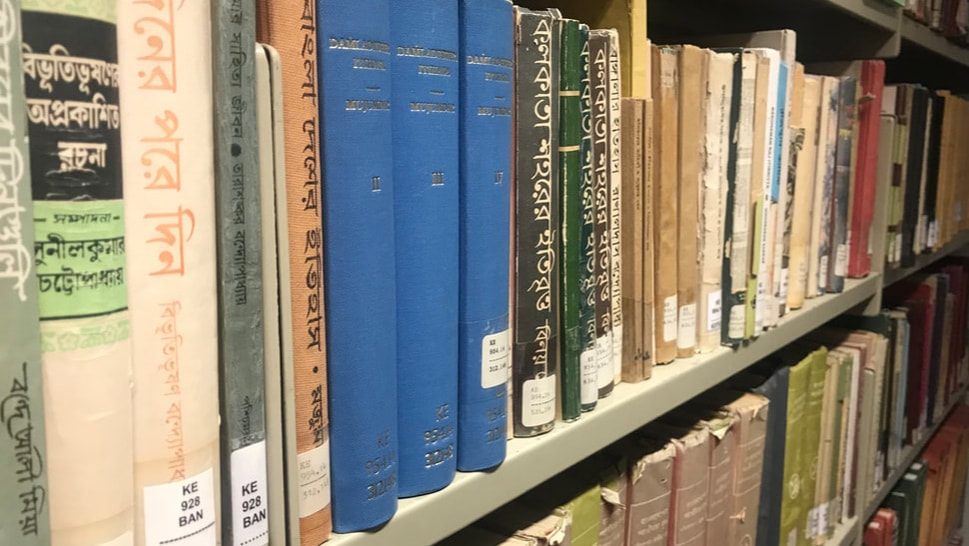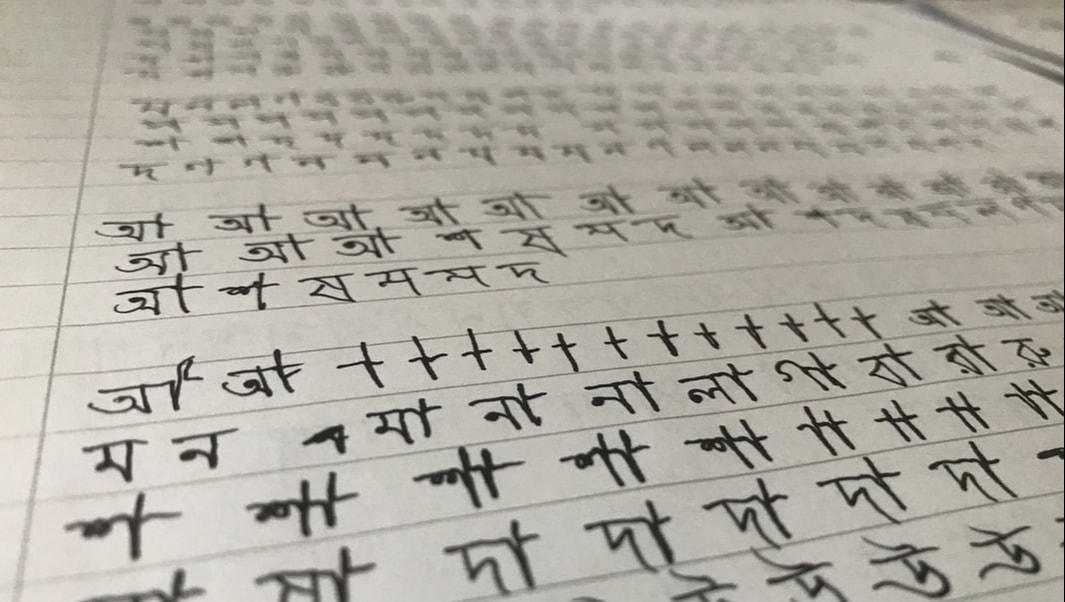|
We are here in London, immersed in the study of Traditions of Yoga and Meditation. It is intense so far, with nearly every waking hour spent in reading, study or practice of some sort. A great relief from the constant reading is our study of the Bengali language. We chose this because it is the language spoken in Kolkata, where Ghosh's College is located. Every time we are in India, we pick up a little bit---we know how to say "how are you?", "go straight", "egg" and "french toast"!---but of course we wish we knew more. So we have embarked into proper study of the language, both reading and speaking. The Bengali language, Bangla বাংলা, has its own alphabet. Which means that the first step is figuring out the sounds of each letter as well as the shape. Needless to say, the letters are quite different from the alphabet used in English, so we have to regress to the level of schoolchildren, drawing shapes over and over again on notepaper until we get it right. This is surprisingly calming and refreshing, especially after studying complex academic arguments in our other courses. In Bangla we get to be artists. To an English speaker, there are some elements of Bangla that are quite confusing. For example, each consonant contains a vowel within it! So the letter 'n' is not just a consonant, but also contains a sound after, making it 'na'. This is true of all the letters, so the alphabet is made up of 'ka' 'ga' 'na' 'ma' 'ba', etc. If that seems confounding, welcome to the club! Luckily for us, we studied a bit of Sanskrit a couple years ago, and Sanskrit follows the same basic rules. So this wasn't new to us, which was a relief.
Once we get around the inherent differences in the logic of the language, it is really just a matter of getting used to the words, sounds and structures. I try to imagine myself as a 3 year old, listening to the sounds and repeating them until they work. I guess the difference here is that 3 year olds don't have an exam at the end of the term. Bangla is one of the most widely spoken languages on the planet, but it is often overshadowed by its fellow Indic language, Hindi. Hindi is more commonly used, but not by much. So we hope that improving our knowledge of Bangla will help us in our research---since the Indian libraries are full of books in Indic languages---as well as with our relationships and communication while we're in Kolkata. Just for fun...some Sanskrit letters are similar to Bangla, some are different. Here are a few. On the left is Sanskrit, the right is Bangla. a आ আ ma म ম na न ন ba ब ব la ल ল ka क ক ga ग গ ha ह হ pa प প pha फ ফ tha थ থ
0 Comments
Leave a Reply. |
AUTHORSScott & Ida are Yoga Acharyas (Masters of Yoga). They are scholars as well as practitioners of yogic postures, breath control and meditation. They are the head teachers of Ghosh Yoga.
POPULAR- The 113 Postures of Ghosh Yoga
- Make the Hamstrings Strong, Not Long - Understanding Chair Posture - Lock the Knee History - It Doesn't Matter If Your Head Is On Your Knee - Bow Pose (Dhanurasana) - 5 Reasons To Backbend - Origins of Standing Bow - The Traditional Yoga In Bikram's Class - What About the Women?! - Through Bishnu's Eyes - Why Teaching Is Not a Personal Practice Categories
All
Archives
May 2024
|








 RSS Feed
RSS Feed